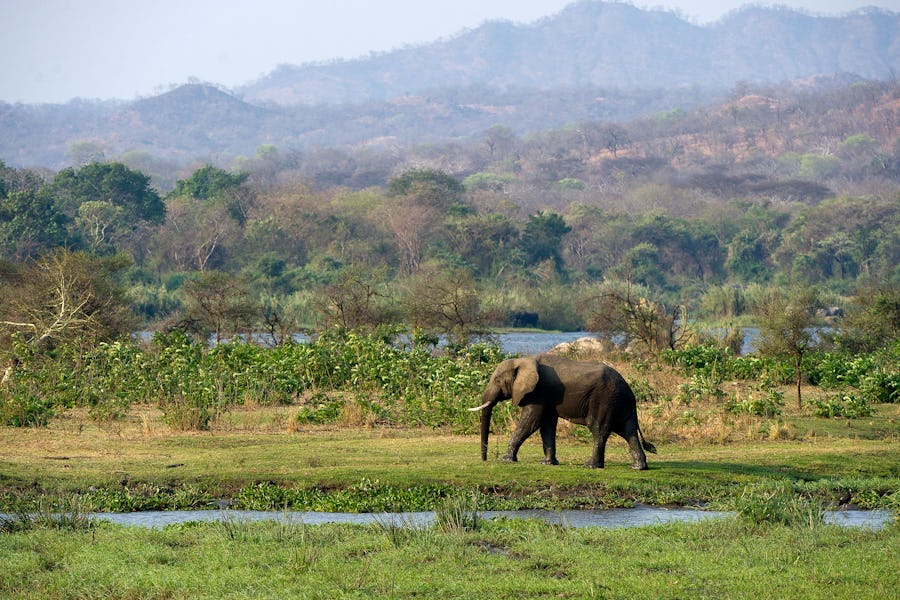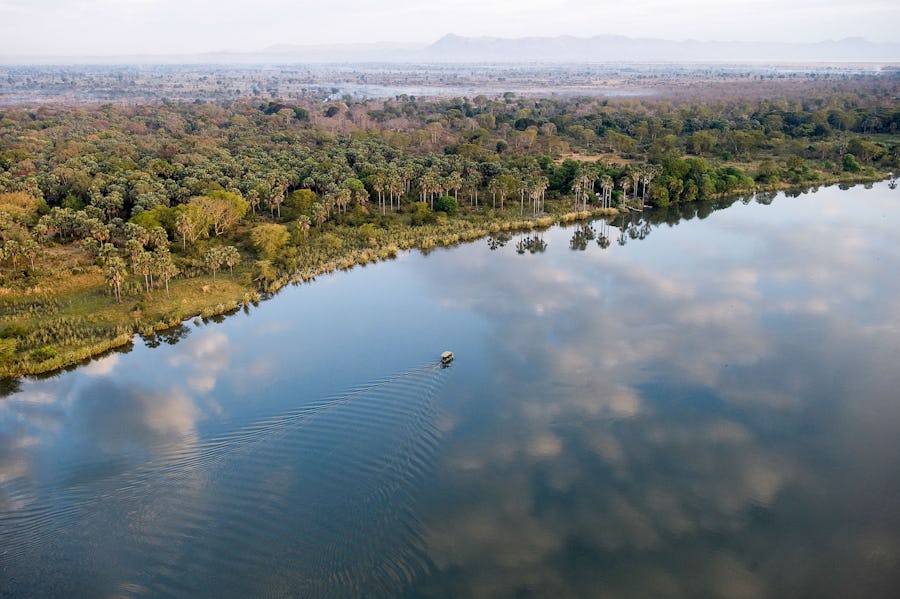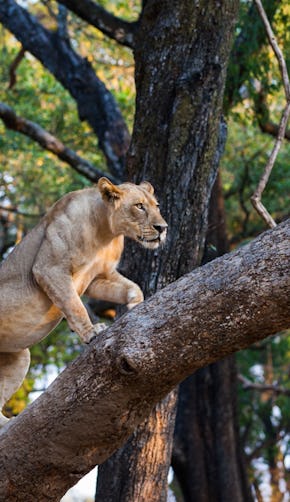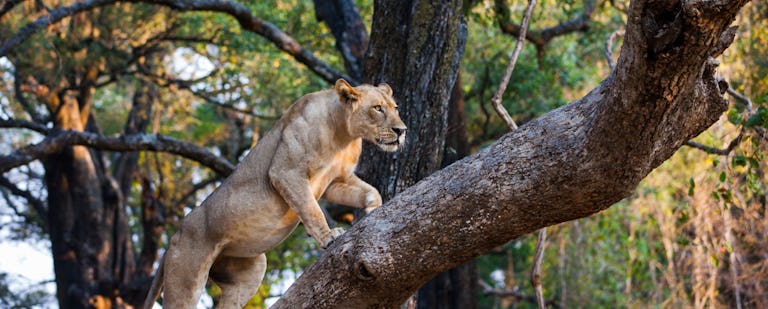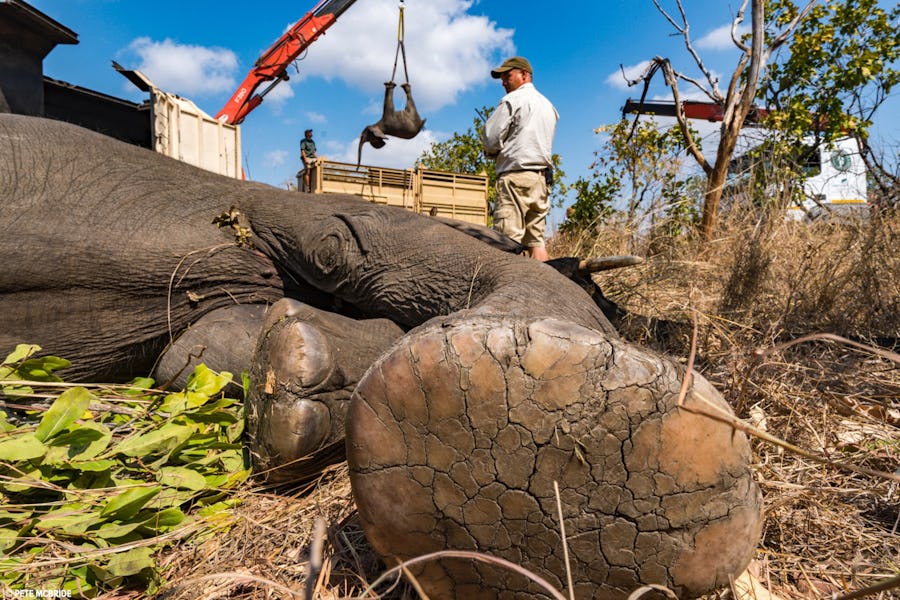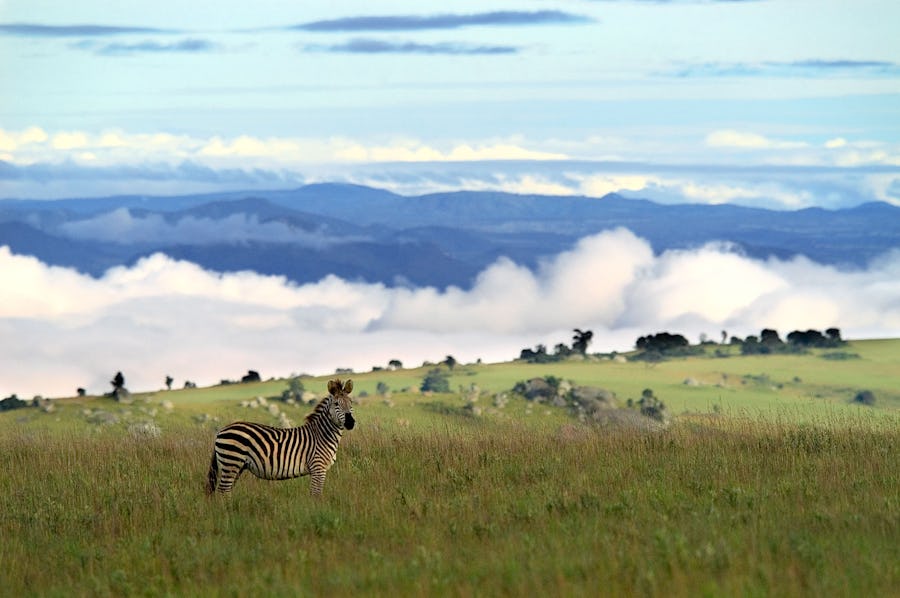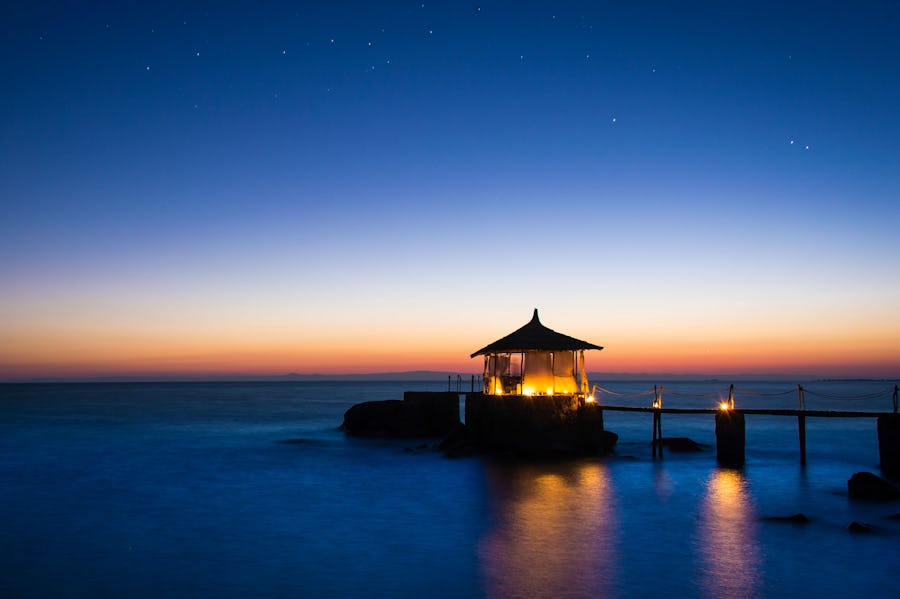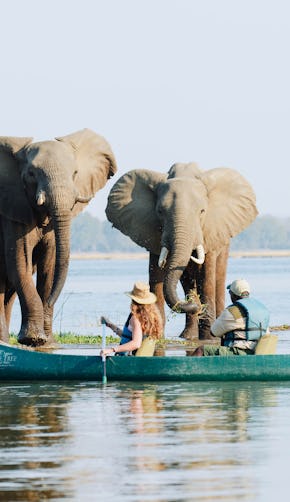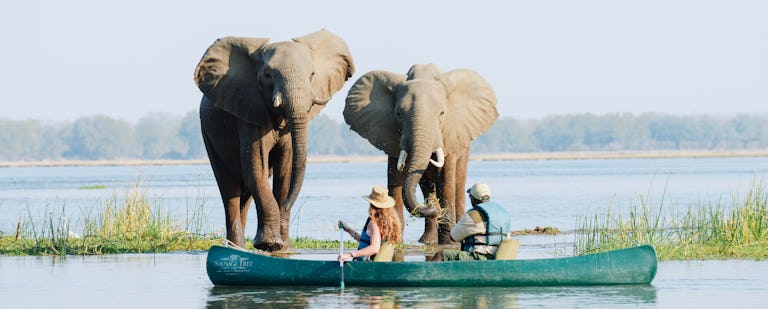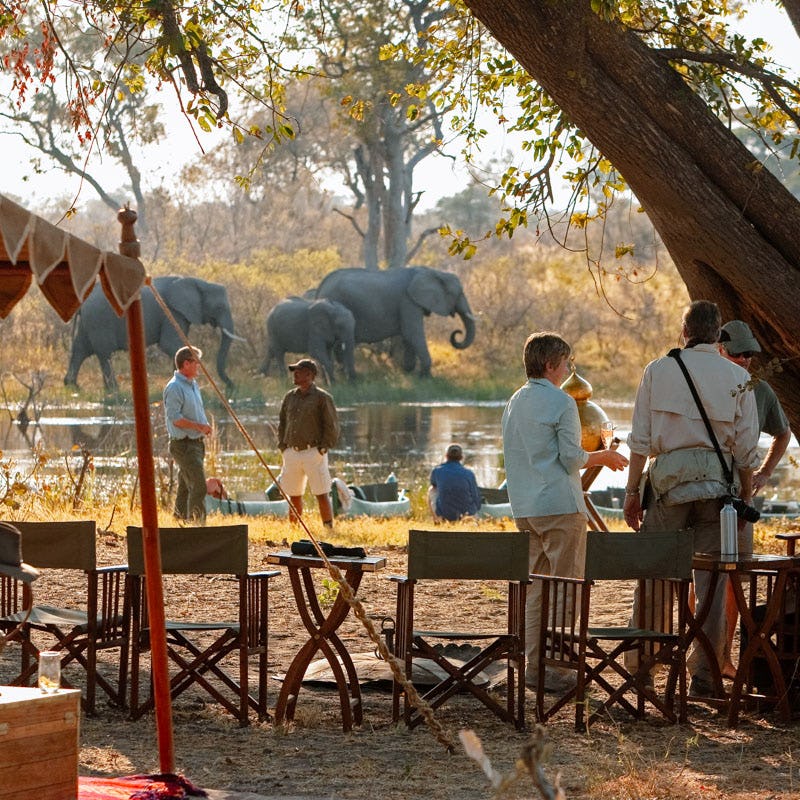When you think of Malawi, the tiny, landlocked country sandwiched between Zimbabwe and Mozambique, your mind will most likely drift to Lake Malawi, the third largest lake in Africa. Here, some of the most romantic lodges in the world (Kaya Mawa definitely jumps into our thoughts!) sit on the lakeshore amid pristine beaches, clear water, and happy, welcoming smiles. Today, Malawi is certainly known for its magnificent geological features (and the lake is probably the most iconic of them all), but it wasn’t always this way…
There was a time when Malawi was a paradise for animals. Elephant once roamed the vast plains, rhino lived peacefully in abundance, and numerous predators were a part of the intricate food chain. Sadly, many years of poaching and hunting, particularly in the 1970s and 80s had a ravaging effect on the country’s animals and Malawi has lost much of its fauna. Thankfully, things are now changing. The country is undergoing a magnificent period of restoration and Malawi is slowly becoming one of the most exciting safari destinations in Africa, with a host of wonderful reserves and parks to visit.
And now, for the story behind them…
Majete Wildlife Reserve
The key to Malawi’s amazing potential is in its diverse game reserves. One such reserve is the spectacular Majete Wildlife Reserve in the far south-western part of the country. Just 13 years ago, Majete was empty of wildlife. Once a haven for rhino and elephant, most of the animals were poached out and even the trees were being cut down and used for charcoal production in the surrounding communities. Tourism in the area was almost non-existent, and very few scouts were employed to protect what little remained on the reserve.
But, like all great stories, Majete’s didn’t end there.
In 2003, conservation NGO (and miracle-workers!) African Parks entered into a relationship with the Malawian government and started an initiative to restore Majete to its former glory. Through working with local communities, on-the-ground operations and the government, the African Parks team reintroduced 2,500 animals, including black rhino, elephant, lion, leopard, sable antelope, impala and buffalo. By 2017, the elephant population had grown to over 430 individuals
In addition to their conservation work, African Parks also established a scholarship programme to provide school fees for local children who otherwise wouldn’t be able to attend school. The hope is that education will lead to an awareness of the need to conserve their natural heritage for the future, and perhaps even inspire a new generation of wildlife guides and conservationists.
The Big Five – leopard, lion, elephant, buffalo and rhino – now roam the park and with tourism on the increase and generating an income for the many communities on the fringes of the reserve, Majete is fast becoming one of the top safari spots in Africa.
Liwonde National Park
If Malawi has one reserve to rival the likes of the Serengeti in Tanzania and the Okavango Delta in Botswana, then it must be Liwonde National Park. It might be small in size, but the park is definitely the most popular of the wildlife areas in Malawi and its 20 square miles (580 sq km) are brimming with wildlife – and that’s despite the country’s rocky history with poaching.
Of all the highlights, the Shire River in Liwonde is where the real magic happens! The lifeblood of the park, the river flows from Lake Malawi all the way to the Zambezi and supports a myriad of denizens of air, land and water. Ancient baobab trees stand tall on the banks and its fertile floodplains, dense woodlands and lagoons harbour Malawi’s largest remaining populations of elephant and critically endangered black rhino.
When African Parks became involved in the running of Liwonde, they helped remove more than 16,500 wire snares that were spread throughout the park and also assisted with the introduction of cheetah back to the reserve. One of the biggest and most ground-breaking of the projects was a historic elephant transfer in which teams moved large herds from Majete and Liwonde to replenish stocks in nearby Nkhotakota Wildlife Reserve. Prince Harry was heavily involved in the project and spent time with the conservation teams on the ground, where he worked alongside volunteers, vets and experts on the frontline, and helped turn the project into of one of the largest and most significant elephant translocations in conservation history.
Thanks to all the work being done by dedicated locals and NGOs, Liwonde is transforming Malawi’s reputation and attracts more visitors now than any other park in the country.
Nkhotakhota Wildlife Reserve
Another fabulous success story is Nkhotakhota Wildlife Reserve, a 1,800 square km reserve that stretches from the Great Rift Valley to within a few kilometres of the Lake Malawi shore. The terrain is primarily thick miombo forest and the vast network of rivers weaving their way through wooded hills make it a wonderland for wildlife.
Sadly, Nkhotakota has also felt the brunt of Malawi’s poaching over the years. It sits beside some of the poorest communities in the country and as such, the land has felt the sting of desperation from poachers and people cutting down wood for food and charcoal.
Lots of work has been done already in the park (and there’s still lots more to do) but there is definite hope that it will return to the great river paradise that it once was. African Parks’ historic elephant relocation was one of the biggest projects in recent years, and 520 elephants, along with more than 1,400 game animals, were moved from Liwonde and Majete.
One of the most important factors for long term conservation is addressing the core issue of poverty and keeping the reserve safe from human encroachment. After all, we as humans have a responsibility to keep the land safe. As such, African Parks has begun working with local communities to address areas of need and promote sustainable livelihoods. Protection is also key, and a large perimeter fence has been constructed, law enforcement beefed up, and a separate core area of the reserve is now fenced as a safe-haven for specific wildlife to be re-introduced. Vehicles, roads and radios have all been upgraded to improve park management and, in addition, Law Enforcement and Community teams have collected hundreds of wire traps, filled in pit traps and confiscated illegal firearms.
With game now beginning to flourish, Nkhotakota is on its way to welcoming guests from all over the world.
Malawi’s other game reserves and national parks
Further to the north of the country is the largest and oldest Park in Malawi, Nyika National Park.
The Nyika Plateau, rising like a large, granite dome from the rolling landscape below, is a unique upland which provides a natural environment unlike any other. Covering the entire plateau, the park consists of rolling grassy hills, escarpments and thick, forested valleys. The grasslands are dotted with wildflowers in the rainy season and orchids flourish here too. The area is renowned for horse safaris, and there’s nothing quite like cantering along the grassy plateau, 2000 metres above sea level.
Ecologically, the reserve is also very important for the rest of the Malawi as it provides a catchment for streams, rivers and dams flowing down through the country. Water activities like fishing and swimming in the waterfalls are a wonderful way to experience the park.
As for wildlife, you won’t see the Big Five here, but, if you’re lucky, you might just catch a glimpse of one of the famed leopards on the reserve. Nyika does in fact have the highest concentration of leopard in Central Africa – but that doesn’t make them any easier to see! Elephant and rhino roam the lower areas of the reserve, and hyena, jackal and leopards lurk in the night.
Then there’s Kasungu National Park, Malawi’s second largest national park after Nyika, located in the central area of the country. The landscape stretches for over 2,000 kilometres and consists mainly of woodland and bush, grassland and rolling hills with a small lake and a marshy river flowing through its heart. This is the place for hippo-viewing and you’ll find hundreds of the lazy animals floating in the lakes. There’s also an estimated 300 elephants remaining in the park after a long history of poaching, and, even better, this population is steadily growing. Kasungu has also been the focus of conservation work by the government in recent years and the reserve is seeing a surge in numbers of buffalo, zebra, leopard, jackal and serval.
Another reserve with a high concentration of game (in an albeit marshy environment) is Vwaza Marsh Game Reserve. In the north of the country near the Zambian border, the reserve is barely known on the Malawian safari circuit, so you can really enjoy an abundance of wildlife and stunning scenery without having to compete with anyone else for space, time or game-viewing space!
There are a number of private lodges here, and walking on the beautiful Lake Kazuni is a highlight. If self-driving is your thing you can also meander along road trails is search of the resident hippos, elephant and buffalo. Many other smaller animals can also be sniffed out here and the birdlife is excellent with around 300 species colouring the marshy plains.
Lake Malawi
One of the best things about Malawi’s resurgence as a wildlife destination is that you don’t need to travel very far to combine a beach and bush holiday…
We are not talking about the typical coastal beach, of course, but rather the magnificent landlocked ‘ocean’ that is Lake Malawi. Part of the Great Rift Valley, the scale of the water body is enormous with the shores stretching to over 25 kilometres apart at points, and the waters plunging to 2300 feet – well-below sea level! It’s the third largest lake in Africa and known by locals as ‘The Lake of Stars.’ Why, we hear you cry? It was actually the missionary-explorer Dr David Livingstone who coined the term almost 150 years ago when he noticed that during the day the sunlight would dance across the deep blue water creating an appearance of twinkling stars, whilst at night the real stars would reflect in the water. At certain times, fishermen would also light up their lanterns and the effect truly was a shimmering, glittering ‘Lake of Stars.’
So, Malawi may be landlocked but this “inland sea”, fringed by beaches of golden sand, is the ideal place to unwind and relax before or after a safari. If you fancy a spot of snorkelling, the lake has more fish species than any other in the world and floating on the surface of the warm water is like drifting on air. Waves aren’t a problem either and the flat lake surface is perfect for kayaking, fair-weather sailing and a host of other activities. If you’re not so much of a water baby, don’t fear! Land activities include trailing walks around the shore, quad biking expeditions and cycling trips amid the forests. And of course, you could simply laze on the beautiful beaches and enjoy the tranquil atmosphere – you would be forgiven for thinking you were on a tropical paradise, if it weren’t for the shriek of a nearby fish-eagle, reminding you how close to the bush you are, or the near-emptiness of the beautiful beaches.
For a combination of bush and beach experiences, Liwonde National Park is close and a good combination would be a few days at the lake before heading out on a safari (or vice versa), without having to travel very far at all. The southern and central parts of Lake Malawi are the most popular, and here you can enjoy a range of accommodation from the clifftop Pumulani Lodge to the romantic island lodges, Mumbo Island and Kaya Mawa. And one of the most magical things about these beach-side boltholes? You’ll have it all to yourself: no crowds, no noise, just a relaxed and happy beach holiday in a unique environment.
As for when to visit, Lake Malawi is best enjoyed in May to late October, when the climate is mild to warm with little chance of rain and the risk of malaria is at its lowest.
Malawi may not be known for safaris just yet – but it’s changing fast. There is no shortage of reserves and beautiful habitats to explore and in many ways, the land has been patiently waiting for its animals to return. Now, as passionate people inject their time and money into securing land for animals to thrive and protecting the landscapes for other to enjoy, so the world will notice and start to see Malawi for what it is: a country that really does have it all.
Best you book your safari now and enjoy it whilst you can still be part of the story…
NB Please contact us for more details about planning a trip to either Vwaza Marsh Game Reserve or Kasungu National Park. Both areas have limited places to stay and are far from the normal tourist trails – but we do like a challenge at Timbuktu!














